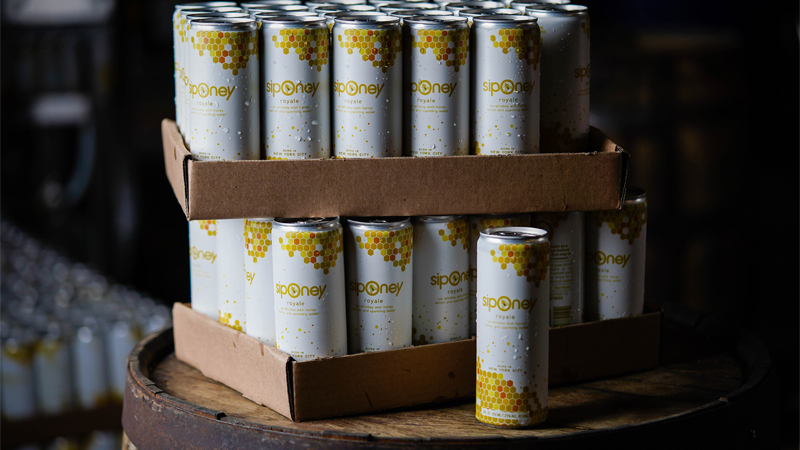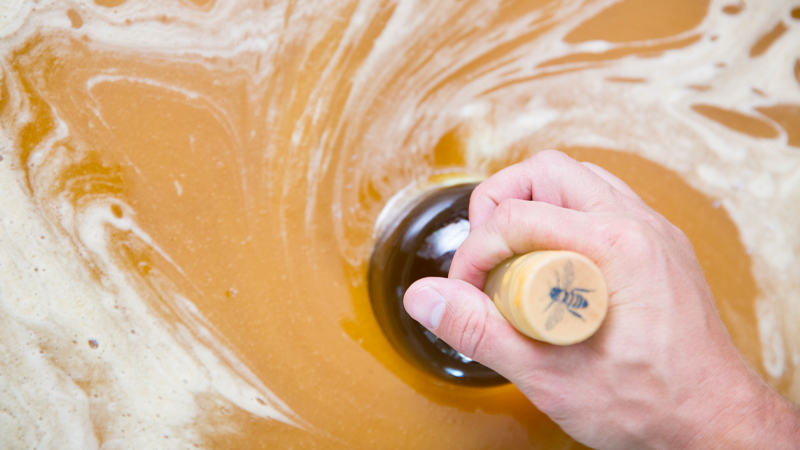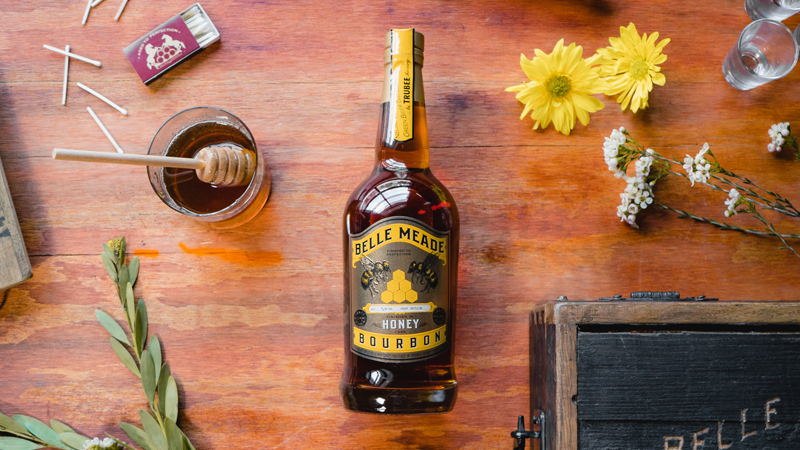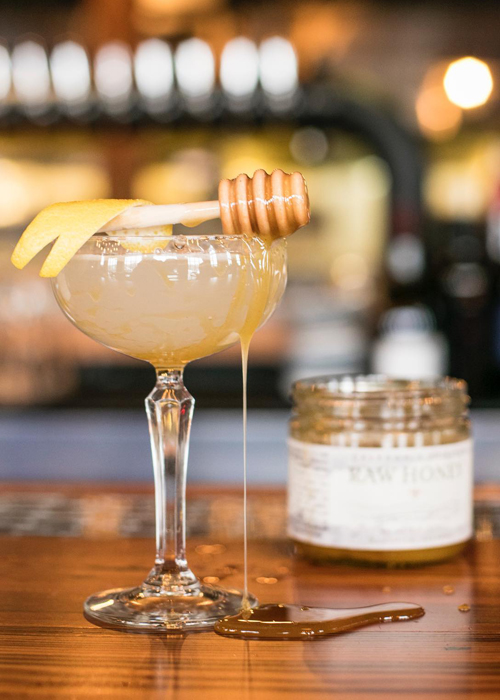Honey and alcohol have been drinking buddies since humankind started experimenting with fermented beverages. In fact, the oldest alcoholic beverage that ever existed is likely mead, or some form of it. For many modern imbibers, though, the discussion of honey as a base for booze ends right there, way back where it first began.
This is a misstep. In recent years, a surge — no, swarm — of spirits producers have been going back to the beginning of booze and deploying honey in creative ways across a wide range of beverages. Collectively, they have consumers buzzing with excitement by showcasing honey’s distinctive floral notes, in some cases, its creamy texture, and, yes, even its terroir.
Honey’s Growing Reach
Busy bees abound in the world of honey and spirits, including with a new ready-to-drink canned cocktail called Siponey. The enterprise chose honey as an ingredient specifically to support bees and the environment on the whole. “We’ve identified honeybees as the first step in recovery for the environment,” says co-founder and CEO Amanda Victoria. “My partner Joseph Mintz is an environmentalist with a background in horticultural studies. We feel an immense responsibility in launching a product that not only tastes great but is overall good for the consumer by using quality ingredients and produced in a way that is environmentally conscious.”
Key to Siponey’s mission is being environmentally sustainable, including current in-progress efforts to become a certified B Corporation. “Siponey will contribute to honey bee environmental awareness by supporting the development of private apiary expansion. Each can sold will help build a home for a honeybee, with a significant percent of proceeds going towards saving honey bees,” Victoria says.

The brand’s initial offering currently in production is called Siponey Royale and is made with just three ingredients: rye whiskey, wildflower honey, and fresh lemon juice. “Carbonated and canned, Siponey Royale drinks similarly to a glass of Champagne with tasting notes of baking spices, jasmine flower, and lemon citrus,” Victoria says.
From Beekeeper to Distiller
At Vermont’s Caledonia Spirits, producer of the Bar Hill line of spirits brands, the distillery’s mission has always been honey. Todd Hardie, a beekeeper since the age of 12, founded the distillery in 2008 and wanted to use raw honey as the base of his products. “Barr Hill was founded on the concept of finding creative ways to use honey and supporting our local agriculture,” explains Ryan Christiansen, president and owner of the distillery.
With a background in brewing, Christiansen at first joined Caledonia Spirits in a part-time role and soon became head distiller for the fledgling enterprise, eventually buying the company from Hardie. “Beekeeping, and honey, are in our roots as a company and remain integral in our distillation and spirits,” he says.
Caledonia Spirits’ distillery currently sources between 60,000 and 80,000 pounds of raw honey per year from beekeepers located within 250 miles. “Our honey is also kept raw, and never heated, to protect the botanical expression of the Northeast,” Christiansen says.

Caledonia’s products include Barr Hill Vodka, Barr Hill Gin, and Tom Cat Gin, a barrel-aged offering. While you might not think of honey as a natural base ingredient, its unique characteristics and floral flavors are a perfect match for gin. “Raw honey delivers a complex botanical depth which blends with the bold resinous juniper, with a goal of creating a juniper-forward gin that is balanced by the creamy and floral honey,” Christiansen says.
As for the vodka, Caledonia uses a more restrained distillation and filtration process than is typically used for such spirits. This allows some of the honey flavors to be retained, Christiansen says. “By distilling only twice, the finished vodka achieves the purity of traditional vodka, but the texture and subtle floral notes cue the raw honey base,” he adds. That textural quality is where the honey shines, imparting what Christiansen describes as a rich, creamy mouthfeel, thanks in no small part to the fact that about 3,000 pounds of raw honey are used per batch.
Beyond the ‘Honey Cask’
In the world of whiskey, distillers often use the term “honey cask” to describe a particularly prized individual cask in their warehouses. But in the case of Nelson’s Green Brier Distillery, brothers Charlie and Andy Nelson took the phrase literally with a limited release of Belle Meade Bourbon.

As part of their Craftsman Cask Collection, the brothers finish sourced bourbon in several casks that previously held raw wildflower honey from local Tennessee producer TruBee honey. The initial release was met with such acclaim that the distillery has continued to offer new annual editions, sold directly from its on-site shop.
Belle Meade Bourbon imparts a range of floral notes, with a viscous mouthfeel delivering honey sweetness alongside more typical bourbon and charred oak influences. It’s a dessert dram delivered at booming cask strength, the best of both worlds, and a far cry from the honey-flavored whiskey that some of the big brands have pursued, generally showcasing added flavoring and saccharine sweetness with underproof (sub-40 percent ABV) spirits, which are more accurately liqueur as opposed to whiskey.
The renewed use of honey for sustainability-minded, delicately flavored spirits is not limited to American producers. Head to Europe and there’s no shortage of brands offering their takes on the liquid gold of alcoholic honey: For example, Georgia’s Midamo is a spirit distilled from four different types of honey; Germany’s Bärenjäger is a traditional honey liqueur; and in Croatia, medica is a class of popular honey and fruit brandy liqueurs.

This speaks to honey’s widespread appeal, as well as its honed-in complexity. “Using only raw northern honey gives us a taste of place, as honey is the ultimate expression of terroir, capturing the floral depth of our region,” Christiansen says.
When raising a glass influenced by natural, raw honey, whether it’s a whiskey or a gin, a liqueur or a canned cocktail, distillers and beverage makers believe the drinker is transported to where that honey came from. “The delicate taste of honey is beautifully influenced by its terroir,” Victoria says.
